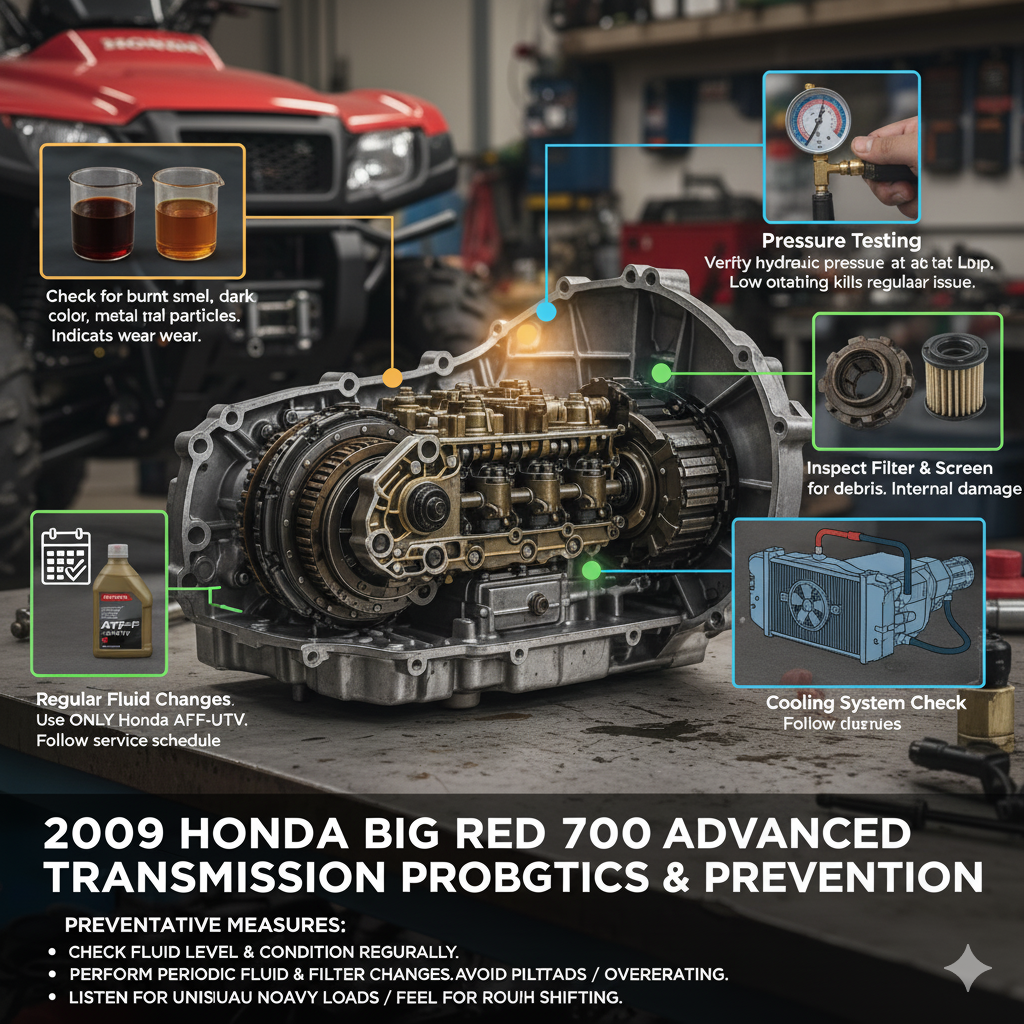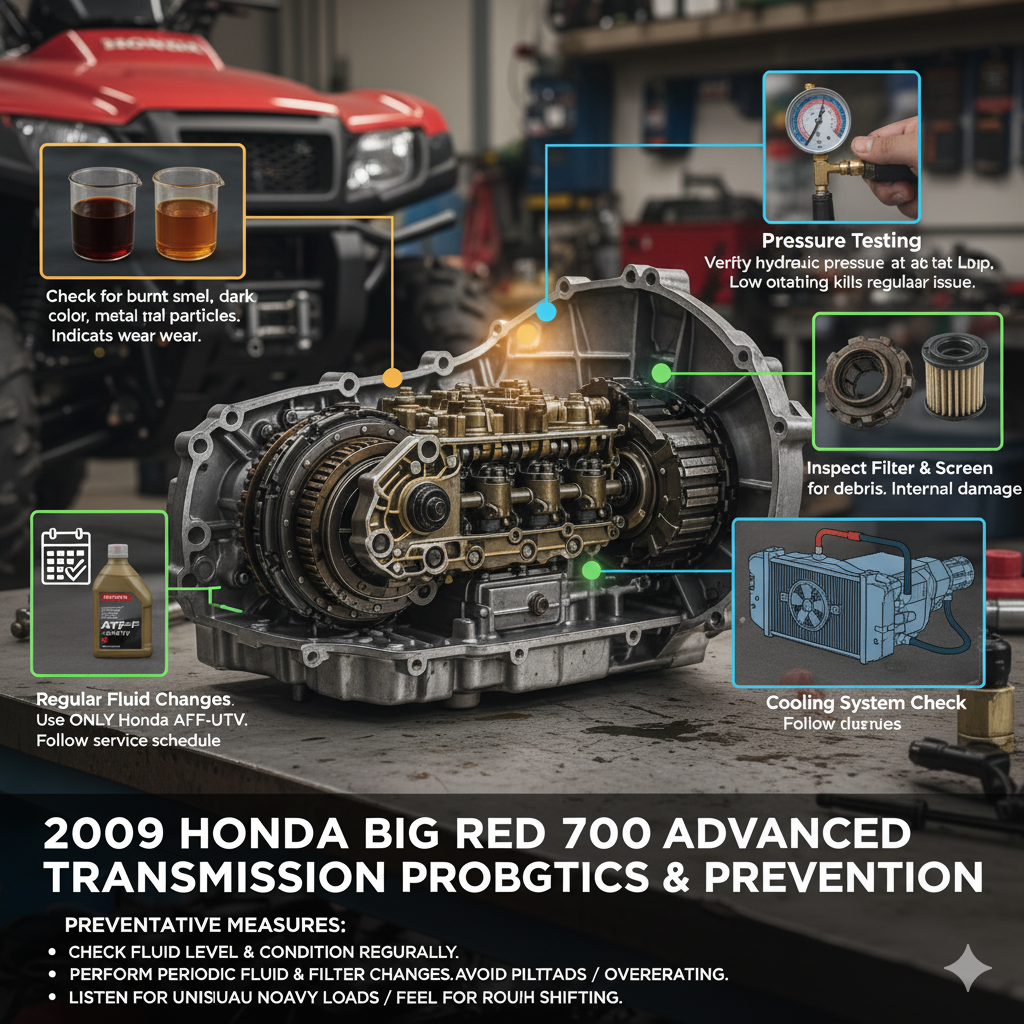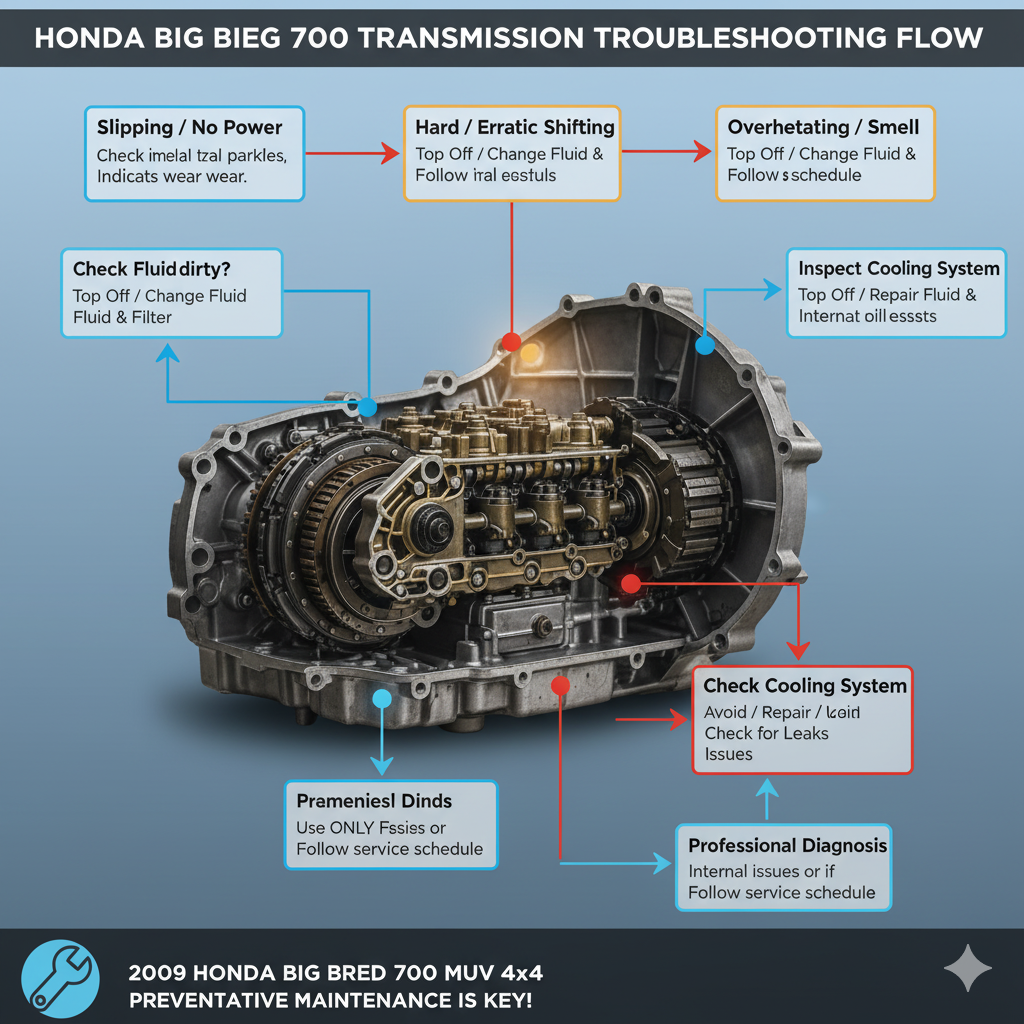The Honda Big Red 700 MUV 4×4, a workhorse of a machine, is renowned for its durability and reliability.
However, like any complex piece of machinery, it’s not without its quirks.
One of the most discussed topics among owners revolves around the transmission system of the 2009 model.
If you’ve found yourself scratching your head over strange noises, slipping gears, or a general lack of performance, you’re not alone.
This comprehensive guide will delve into the common transmission problems that have been reported for the 2009 Honda Big Red 700 MUV 4×4.
We’ll explore the symptoms, potential causes, and what you can do to address them, ensuring you can get back on the trail or back to work with confidence.

Videos are added as random thoughts 💭 💭 💭 💭
The Heart of the Matter: Understanding the Big Red’s Transmission
Before we dive into the problems, it’s essential to have a basic understanding of the transmission system in the 2009 Honda Big Red.
This model features a three-speed automatic transmission with a torque converter, a design that was relatively advanced for its time in the UTV market.
This system is responsible for transferring power from the engine to the wheels, allowing for smooth acceleration and reliable performance across various terrains.
However, the complexity of this system also means there are several potential points of failure.
From the clutch packs to the oil pump, a number of components need to work in perfect harmony. When one part starts to fail, it can have a cascading effect on the entire system.
Common Transmission Problems and Their Symptoms
Let’s take a closer look at some of the most frequently reported transmission issues for the 2009 Honda Big Red 700 MUV 4×4.
1. Transmission Slipping
This is perhaps the most common complaint among owners.
Transmission slipping occurs when the engine revs, but the vehicle fails to accelerate accordingly.
It might feel like the UTV is struggling to find the right gear or that it’s losing power.
Symptoms:
Engine RPMs increase, but the vehicle’s speed does not.
A noticeable hesitation or delay when accelerating.
A feeling of a “lurch” or “jerk” as the transmission struggles to engage.
Potential Causes:
Worn Clutch Plates: Over time, the friction material on the clutch plates can wear down, causing them to lose their grip.
This is a common issue in any vehicle with an automatic transmission, and the Big Red is no exception.
Contaminated Transmission Fluid: Dirty or contaminated fluid can prevent the clutch packs from engaging properly.
This can be caused by a variety of factors, including internal component wear or water intrusion.
Low Oil Pressure: The transmission in the Big Red relies on hydraulic pressure to function.
If the oil pressure is low, it can lead to a host of problems, including slipping.

2. Shifting Issues
Another common problem is difficulty with shifting.
This can manifest in several ways, from a complete inability to shift into gear to harsh or delayed shifts.
Symptoms:
The vehicle gets stuck in one gear.
Harsh or clunky shifting between gears.
A significant delay when shifting from neutral to drive or reverse.
Potential Causes:
Solenoid Failure: The transmission uses electronic solenoids to control the flow of hydraulic fluid and engage the different gears.
If one of these solenoids fails, it can lead to shifting problems.
Internal Mechanical Failure: In some cases, a more serious internal mechanical failure can be the culprit.
This could include a broken gear, a damaged clutch drum, or a problem with the valve body.
3. Clutch Failure
In more severe cases, owners have reported complete clutch failure.
This is often a result of the clutch discs coming apart and causing a blockage in the oil pickup tube.
Symptoms:
A complete loss of power to the wheels.
The engine may still run, but the vehicle will not move.
A grinding or whining noise coming from the transmission.
Potential Causes:
Catastrophic Clutch Disc Failure: The friction material on the clutch discs can delaminate and break apart, leading to a complete loss of function.
Oil Starvation: If the oil pickup tube becomes clogged with debris from a failing clutch, the transmission can be starved of oil, leading to catastrophic failure.

What to Do if You Suspect Transmission Problems
If you’re experiencing any of the symptoms described above,
it’s important to take action sooner rather than later.
Ignoring transmission problems can lead to more extensive and expensive repairs down the road.
1. Check the Transmission Fluid: The first and easiest step is to check the transmission fluid.
Make sure the fluid level is correct and that the fluid is clean.
If the fluid is dark, burnt-smelling, or contains metal shavings,
it’s a sign of a serious internal problem.
2. Inspect for Leaks: Check for any signs of transmission fluid leaks around the transmission case and lines.
A low fluid level can cause a variety of problems, so it’s important to address any leaks as soon as possible.
3. Consult a Professional: If you’re not comfortable diagnosing and repairing the problem yourself, it’s always best to consult a qualified mechanic.
They will have the tools and expertise to properly diagnose the issue and recommend the best course of action.
Preventative Maintenance: The Key to a Long Transmission Life
While some transmission problems are unavoidable, there are several things you can do to extend the life of your Big Red’s transmission.
Regular Fluid Changes: Regularly changing the transmission fluid is the single most important thing you can do to prevent transmission problems.
Follow the manufacturer’s recommended service intervals and use a high-quality transmission fluid.
Avoid Overloading: The Big Red is a capable machine, but it’s important to avoid overloading it.
Exceeding the vehicle’s towing or hauling capacity can put a strain on the transmission and lead to premature wear.
Proper Warm-Up: Allow the engine and transmission to warm up before putting the vehicle under a heavy load.
This will help to ensure that the transmission fluid is at the proper operating temperature and that all of the internal components are properly lubricated.
Conclusion
The 2009 Honda Big Red 700 MUV 4×4 is a reliable and capable UTV, but it’s not immune to transmission problems.
By understanding the common issues and taking a proactive approach to maintenance, you can help to ensure
that your Big Red provides you with years of trouble-free service.
If you do encounter any of the problems described in this guide, don’t hesitate to seek professional help.
With the right care and attention, your Big Red will be ready totackle any adventure you throw its way.
Bonus Tips Revised –
Understanding the transmission in your 2009 Honda Big Red 700 MUV 4×4 is key to a smooth ride.
This robust utility vehicle is designed for demanding tasks, and its hydrostatic transmission plays a crucial role in its performance.
When issues arise, it can be frustrating,
but many common problems have identifiable causes and solutions.
Common Transmission Problems and Their Solutions
1. Slipping Transmission:
One of the most frequently reported issues is a slipping transmission. This can manifest as the engine revving higher than usual without a corresponding increase in speed, or a feeling of hesitation during acceleration.
Possible Causes:
Low Transmission Fluid: This is often the simplest culprit. Low fluid levels can lead to insufficient hydraulic pressure, causing the clutches to slip.
Worn Clutch Packs: Over time, the clutch plates within the transmission can wear down, reducing their ability to engage effectively.
Contaminated Fluid: Old, dirty, or burnt transmission fluid can lose its lubricating properties and cause internal components to wear prematurely.
Faulty Pressure Regulator: A malfunctioning pressure regulator might not be providing adequate fluid pressure to the clutch packs.
Solutions:
Check and Top Off Fluid: Refer to your owner’s manual for the correct fluid type and checking procedure. Ensure the fluid is at the appropriate level.
Fluid and Filter Change: If the fluid is dark, smells burnt, or hasn’t been changed in a while, a complete fluid and filter replacement is highly recommended.
Professional Inspection: If fluid changes don’t resolve the issue, it’s best to have a qualified technician inspect the clutch packs and other internal components.
2. Clutch Failure:
The Honda Big Red 700 uses a wet clutch system, and while generally reliable, it can experience issues. Clutch failure might present as a complete loss of drive, difficulty engaging gears, or a burning smell.
Possible Causes:
Excessive Wear: Heavy use, especially towing or operating in challenging terrain, can accelerate clutch wear.
Overheating: Prolonged high-stress operation can lead to transmission fluid overheating, which in turn damages clutch materials.
Incorrect Fluid: Using the wrong type of transmission fluid can cause clutch material degradation.
Solutions:
Replace Clutch Components: If the clutch plates are significantly worn or damaged, they will need to be replaced. This is typically a more involved repair.
Address Overheating: Ensure your cooling system is functioning correctly and avoid sustained heavy loads that can lead to excessive heat buildup.
Use Correct Fluid: Always use the manufacturer-recommended transmission fluid.
3. Shifting Problems:
While the hydrostatic transmission in the Big Red 700 offers seamless operation, you might encounter issues like difficulty engaging forward or reverse, or a jerky engagement.
Possible Causes:
Linkage Issues: Problems with the shift linkage, such as a loose or damaged cable, can prevent proper gear selection.
Low Fluid Pressure: Similar to slipping, insufficient fluid pressure can impact the transmission’s ability to engage gears smoothly.
Internal Valve Body Malfunction: The valve body directs fluid flow within the transmission. A blockage or malfunction here can cause shifting anomalies.
Solutions:
Inspect Shift Linkage: Check for any visible damage or looseness in the shift cable and connections. Adjust or replace as necessary.
Check Fluid Level and Condition: Ensure the transmission fluid is at the correct level and in good condition.
Professional Diagnosis: For internal valve body issues, a professional diagnosis is essential.
Preventative Maintenance Tips
Regular maintenance is your best defense against transmission problems.






